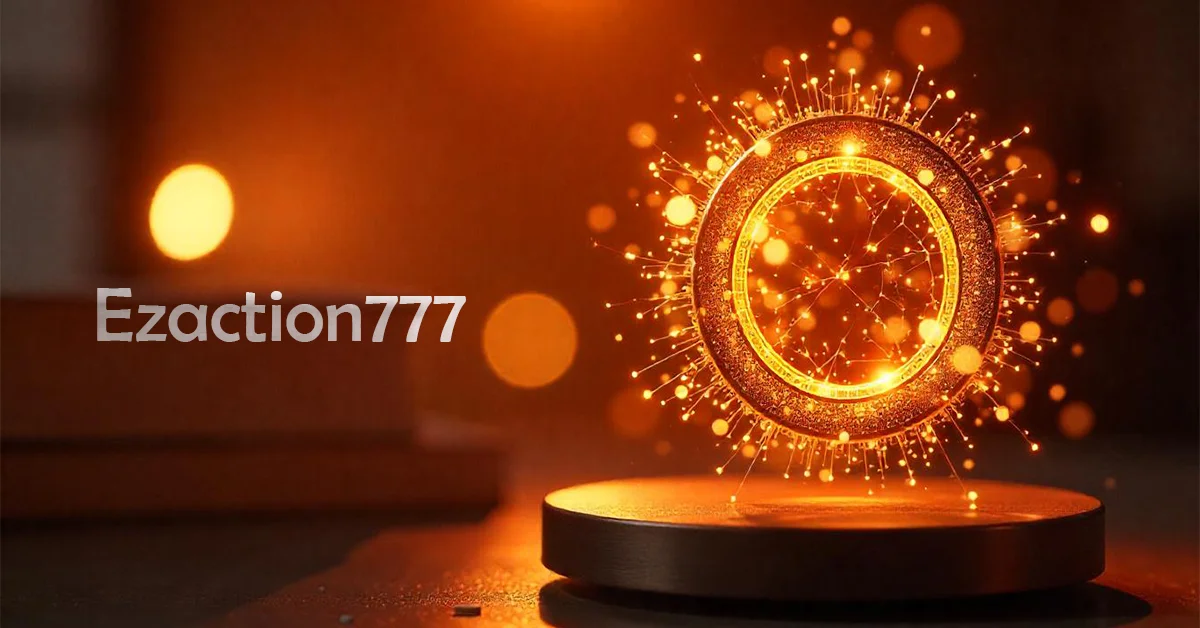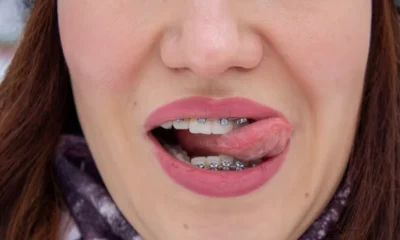BLOG
SusBlueZilla Uncovered: What Everyone Talking About

In the vast ocean of online trends, new names and phenomena emerge daily. One such buzzword that’s recently been making waves is SusBlueZilla. If you’ve stumbled across this term and found yourself wondering, “What exactly is SusBlueZilla’s and why is everyone talking about it?”, you’re in the right place. This article will dive deep into the world of SusBlueZilla’s unpacking its origins, meaning, and why it has captivated so many people.
Whether you’re a casual internet surfer, a meme enthusiast, or someone curious about digital culture trends, this comprehensive guide will give you everything you need to know about SusBlueZilla.
TRENDING
Miiyazuko Sant.2: Secrets Beneath The Surface
What Is SusBlueZilla?
Breaking Down the Term
To understand SusBlueZilla’s let’s first break it down into its components:
-
Sus: A slang term popularized by gaming communities, especially from the game Among Us, meaning “suspicious” or “questionable.”
-
Blue: Often associated with calmness or trust but also can refer to the color of a character or icon.
-
Zilla: A suffix derived from “Godzilla,” implying something huge, monstrous, or powerful.
Put together, SusBlueZilla’s implies a large, suspicious entity — often with playful or meme-like undertones.
Origins of SusBlueZilla
SusBlueZilla first gained traction in online communities around early 2024, particularly in forums dedicated to gaming, memes, and internet culture. The name was initially used to describe a mysterious, enigmatic character in fan-created content, often depicted as a giant blue creature with an aura of suspicion.
Why Is SusBlueZilla So Popular?
Memes and Viral Content
One key reason for SusBlueZilla’s popularity is the viral nature of memes. When a concept or character captures the imagination, memes spread like wildfire. SusBlueZilla’s mix of humor, mystery, and visual appeal made it an ideal subject for meme creators.
Community Engagement
The intrigue around SusBlueZilla’s sparked fan art, stories, and discussions, which helped build a vibrant community. People love to speculate, theorize, and create content around mysterious or ambiguous topics, and SusBlueZilla offered just that.
Cross-platform Presence
From Reddit and Twitter to TikTok and Discord servers, SusBlueZilla’s content appeared everywhere. This cross-platform presence helped it grow beyond a niche internet phenomenon into a mainstream talking point.
SusBlueZilla In Pop Culture
Examples of SusBlueZilla’s Impact
-
Gaming: Some indie games introduced Easter eggs or mods featuring SusBlueZilla-like creatures.
-
Merchandise: Custom stickers, apparel, and accessories inspired by SusBlueZilla’s began popping up on platforms like Etsy and Redbubble.
-
Streaming: Popular streamers referenced SusBlueZilla’s during broadcasts, further boosting awareness.
How Fans Interpret SusBlueZilla
Interpretations vary — some see SusBlueZilla’s as a metaphor for hidden threats or challenges, while others view it as a fun character symbolizing playful suspicion.
How To Join The SusBlueZilla Craze: A Step-By-Step Guide
If you want to get involved with the SusBlueZilla’s community or just understand what all the hype is about, here’s how you can dive in:
Step 1: Follow Key Platforms
-
Join Reddit communities like r/SusBlueZilla’s
-
Follow hashtags on Twitter and TikTok: #SusBlueZilla, #SusBlue
-
Participate in Discord servers where SusBlueZilla’s is discussed
Step 2: Engage With Content
-
Watch videos and streams mentioning SusBlueZilla
-
Explore fan art and memes
-
Read fan theories and stories
Step 3: Create Your Own Content
-
Design your own SusBlueZilla’s memes or artwork
-
Write fan fiction or lore about the character
-
Share your content on social media to join the conversation
Understanding The Appeal: What Makes SusBlueZilla So Relatable?
The Power of Mystery
Humans are naturally drawn to mystery and puzzles. SusBlueZilla’s ambiguous nature invites curiosity and imagination.
The Fun of Suspicion
“Sus” culture thrives on playful suspicion — it’s about guessing, speculating, and joking. SusBlueZilla’s embodies this perfectly.
Visual Impact
The blue monster imagery is both intimidating and endearing, making it memorable and easy to share.
Common Questions About SusBlueZilla
Is SusBlueZilla a Real Character?
No, SusBlueZilla’s is primarily a fan-created meme and internet concept, not an official character from any major media franchise.
Can I Use SusBlueZilla in My Content?
Generally, yes — since it’s a community-driven phenomenon. Just respect any community guidelines and avoid commercial misuse without permission.
Why Is “Blue” Important?
Blue is often linked to trust but also calmness and mystery. It’s a striking color that makes the character stand out visually.
SusBlueZilla: SEO Keywords And Related Terms
To help you understand the broader context, here are related keywords that often come up with SusBlueZilla:
-
SusBlueZilla memes
-
SusBlueZilla fan art
-
SusBlueZilla meaning
-
SusBlueZilla origin
-
SusBlueZilla gaming
-
Blue monster memes
-
Suspicious internet characters
-
Sus meme culture
The Future Of SusBlueZilla
As internet culture evolves, so do its symbols. SusBlueZilla’s might morph into new forms, inspire games, or even become part of digital marketing campaigns.
Creators and fans will likely continue pushing boundaries, keeping the legend alive and growing.
Conclusion: Why SusBlueZilla Matters
SusBlueZilla’s is more than just a meme — it’s a cultural phenomenon that highlights how communities create meaning from playful suspicion, mystery, and shared creativity. Whether you see it as a fun mascot or a symbol of the unknown, SusBlueZilla’s captures a unique internet zeitgeist.
By understanding SusBlueZilla’s you gain insight into modern online culture, viral trends, and the power of digital communities.
So next time you see SusBlueZilla’s popping up in your feed, you’ll know exactly why everyone’s talking about it — and maybe, you’ll join the fun too!
ALSO READ: Fueling Wellness: Insights From TimesHealthMag Nutrition Trends
BLOG
Crowning The Self: A Deep Dive Into The Queen Complex

Have you ever felt a powerful urge to be admired, cherished, or even adored? Maybe you strive for excellence so fiercely that you demand attention and recognition. That, in essence, is the heartbeat of the Queen Complex. In a world where empowerment is celebrated, the Queen Complex can be both a gift and a challenge. This psychological phenomenon merges deep confidence with subtle insecurity, creating a persona that insists on being seen—but often at a cost.
In this post, we’ll unravel the Queen Complex from its regal roots to its real-world implications. We’ll learn how to spot its signs, understand its origins, and harness its positive potential—all without falling into its pitfalls. If you’ve ever wondered why self-esteem sometimes masquerades as entitlement, or why seeking validation feels necessary, this journey into your royal psyche might surprise you. Let’s crown ourselves with insight.
TRENDING
What Is Ezaction777? A Quick Guide To Getting Started
What Is The Queen Complex?
Carefully Defined
At its core, the Queen Complex describes a psychological pattern in which an individual unconsciously takes on a regal persona—demanding prestige, admiration, and authority. It stems from deep-seated needs: for approval, for control, or simply the longing to feel special.
-
Self-perception: You see yourself as unique and deserving of rule-worthy treatment.
-
Validation craving: Compliments and recognition fuel you.
-
Power dynamics: You prefer lead roles, whether at work, in relationships, or in social settings.
Why It Matters
Understanding the Queen Complex illuminates why you (or someone you know) might feel discomfort when not in the spotlight. While ambition is healthy, the Queen Complex may cloak insecurities—fear of being ordinary or unseen.
Origins Of The Queen Complex
Childhood Expectations & Reinforcement
Children praised excessively for achievements may internalize the need to always shine. Comments like, “You’re the best student in class” or “Our little princess” echo into adulthood, shaping expectations.
Modeling Powerful Figures
Perhaps you grew up with dominant parents, or admired confident figures in media. Seeing power rewarded can embed the idea that one must always be in charge and admired.
Coping with Insecurity
Beneath every crown may lie a fragile foundation. The Queen persona often emerges to armor soft spots: “If I’m admired, I’ll never feel vulnerable.”
Signs Of The Queen Complex
Knowing the crown has weight means recognizing its signs:
Excessive need for praise: You’re not just satisfied with a job well done—you expect a standing ovation.
People-pleasing masked as leadership: You rush to lead, but not always from a place of competence—sometimes from a fear of blending in.
Defensiveness under perceived criticism: Feedback triggers strong emotional reactions, as it feels like dethronement.
Rigid standards for self and others: Others must meet your royal benchmarks, or face banishment (social withdrawal, snarky remarks).
Emotional blackmail: You might guilt-trip someone into conforming, e.g., “If you cared, you’d know what I want.”
When The Crown Becomes A Burden
Relationships Under Pressure
Demands for admiration can exhaust friends or partners. They may feel overshadowed or manipulated—tension grows.
Impaired Authenticity
The persona may hide vulnerability, humility, and genuine connection. You’re always performing to maintain the aura.
Perfectionist Perils
The ruthless pursuit of excellence can lead to burnout. When anything less than queenly perfection is unacceptable, rest and self-care vanish.
Harnessing Your Inner Queen—Healthily
Yes, we all have queenly energy. The key is awareness and balance.
Cultivate Self-Awareness
-
Journal about urges to control or shine.
-
Reflect when feedback feels threatening. Ask: Am I protecting a fragile ego?
Build a Resilient Inner Core
-
Mindfulness practices (deep breathing, meditation) help you sit with discomfort.
-
Affirmations that aren’t about superiority: “I am worthy whether or not I shine.”
Gentle Leadership
-
Lead with warmth, not demand. Ask questions, invite input.
-
Serve before commanding. Let listening and empathy guide you.
Embrace the Vulnerable Queen
-
Share fears: “I’m scared I’m not enough.” This endears you, it humanizes you.
-
Accept imperfection publicly. Let your team see your learning process.
Exercises To Rebalance The Crown
| Exercise | Description | Impact |
|---|---|---|
| 1. Gratitude with humility | Share thanks: “Thank you for being here, I couldn’t have done it alone.” | Fosters connection and slows entitlement |
| 2. 360° feedback | Ask colleagues/friends/partner for candid feedback on how your leadership feels. | Reveals blind spots, softens rigid persona |
| 3. “Let them lead” challenge | Cede control in small group decisions. Resist directing. | Builds trust in others—and yourself |
| 4. Vulnerability practice | Once a week, share something personal or flawed. | Humanizes you, deepens mutual respect |
| 5. Mirror check | When praise arises, take a self-inventory: Am I seeking it? Why? | Highlights validation patterns |
Self-Care Beyond The Crown
Even queens need rest. Prioritize:
-
Restorative downtime: Bath, journal, nap—not just busy with noble deeds.
-
Hobbies unrelated to status: Try cooking just for fun, painting with no audience.
-
Peer support: A coach or therapist can help you explore demands, fears, and expectations.
The Queen Complex In Society & Culture
Workplaces & Leadership
In leadership roles, the Queen Complex can appear as perfectionism or micromanagement. Businesses must cultivate purposeful leadership—where results come from collaboration, not power plays.
Social Media Era
Instagram and TikTok encourage the flawless lifestyle. Queen Complex leaks into highlight reels aimed at constant admiration. Consumers become creators—a digital monarchy of curated perfection.
Feminism & Empowerment
Not all queen energy is bad. When directed toward justice, compassion, and leadership, it can be transformative. The challenge is ensuring that empowerment doesn’t tip into entitlement.
Finding Balance: Throne & Humanity
Strive for a Balanced Sovereignty:
High standards, higher empathy. Expect much—but lift others up too.
Command respect, grant respect. Listen as much as you speak.
Confidence and humility walk together. You don’t have to dim your light, just let others shine alongside you.
Celebrate others’ victories as much as your own. You’re a monarch with a realm—not a solo stage.
Conclusion
The Queen Complex is an intricate blend: confidence, desire for adoration, and the hidden ache of vulnerability. Wielded with awareness, it can be a force for positive leadership, deep connection, and authentic self-expression. Left unchecked, it can isolate, strain relationships, and fuel burnout.
So let us crown the self with compassion, balancing dignity with humility. Lead boldly, yet listen deeply. Demand respect—with grace. And allow quivering humanness beneath the mantle. That’s true regal power. The throne sits well only on a grounded soul.
FAQs
What is the Queen Complex?
The Queen Complex is a psychological pattern where someone sees themselves as deserving of admiration, control, and high status—often masking fear of being ordinary. It involves a mix of ambition, entitlement, and hidden insecurity.
Are confidence and the Queen Complex the same?
No. Confidence is healthy self-esteem. The Queen Complex adds a layer of needing external validation, entitlement, and dominance—you’re confident if you’re admired.
Can men have the Queen Complex?
Absolutely. It’s not limited by gender. Anyone who craves that regal mix of power and praise—and responds poorly without it—can experience a Queen Complex.
How do I support someone with the Queen Complex?
Offer genuine, balanced feedback. Affirm their abilities, but also celebrate collective success. Encourage them to step back, share leadership, and show vulnerability in safe spaces.
When does ambition cross into the Queen Complex?
Ambition is pursuit. The Queen Complex demands admiration only for achievement. When your focus shifts from doing to being adored for doing, the line is crossed.
ALSO READ: Discovering The Power Of A Curated Blend Of Expert Goodnever
BLOG
What You Need To Know About NoBullSwipeCom

You’re scrolling through countless tools, apps, and platforms that promise to streamline your life or turbocharge your productivity, but few actually deliver on their claims. Enter NoBullSwipeCom – a rising star in the world of digital interaction that’s creating buzz for all the right reasons. In this article, we’ll dive into what NoBullSwipeCom is, why it’s gaining attention, how it works, and most importantly, how you can get the most out of it—without any fluff or false promises. No B.S., just smart, practical insights. Let’s get started.
TRENDING
Discovering The Power Of A Curated Blend Of Expert Goodnever
What Is NoBullSwipeCom?
NoBullSwipeCom is a web‑based (or perhaps app‑based) platform designed to simplify how users interact with digital content, subscriptions, or services. Unlike platforms that drown users in endless ads, confusing interfaces, or hidden fees, NoBullSwipeCom cuts through the clutter. Think of it as a digital concierge—minimalistic design, zero-nonsense navigation, and a clear mission: help users connect with what matters most, quickly and easily.
At its core, NoBullSwipeCom leans heavily on intuitive swiping mechanics—borrowed from popular dating apps—to make choosing or dismissing options feel natural and frictionless. One swipe right for yes, one swipe left for no, and you’re in control.
Why It’s Trending
You might be asking, “Why is NoBullSwipeCom holding a spotlight right now?” Here are a few reasons:
Simplicity Wins
In a world of information overload, less is more. People are embracing platforms that don’t overwhelm them. NoBullSwipeCom prioritizes user experience: a clean interface, clear instructions, and no confusion.
Time-Efficiency
Swiping isn’t just fun—it’s fast. What used to take several clicks and pages of explanation now takes one swipe. Busy users appreciate this speed.
Transparency and Trust
NoBullSwipeCom skips the sales speak. No hidden costs, no bundled offers you didn’t ask for, and no manipulative upsells. You only see what you need.
Flexible Use Cases
Merely an app for choosing snacks? Or something bigger? NoBullSwipeCom’s approach can apply to subscriptions, content curation, fitness programs—you name it. Its modular framework makes it adaptable and versatile.
Core Features Explained
Swiping UX
The beauty of NoBullSwipeCom lies in its familiar swipe-based interface. You’re shown one option at a time—whether it’s a service, a piece of content, or a product. Swipe right to select or explore further, swipe left to dismiss. Done.
Personalized Filters
Before you begin swiping, you can set up preferences—categories, price ranges, content types, frequency of updates. NoBullSwipeCom remembers these, tailoring each swiping session.
Minimalist Design
Expect clean typography, sparse colors, and intuitive placement. There’s no clutter, no distracting pop-ups, and no excessive branding. Just the options you’re choosing between.
Clean Subscription Management
If you’re using NoBullSwipeCom to manage subscriptions or recurring services, you’ll appreciate the clear oversight: subscription statuses, renewal dates, and transparent cancellation processes.
Integration-Friendly
While it runs stand‑alone, NoBullSwipeCom also integrates with calendars, reminder systems, payment accounts, and (in beta) automation tools like Zapier.
Analytics Dashboard
Want a snapshot of what you’ve picked, tossed, or saved? The analytics section shows stats like time spent swiping, number of selections, categories covered, and more.
Who Is NoBullSwipeCom For?
Busy Consumers
If you want to make quick, smart choices—whether it’s a book to read, a meal plan, or a streaming service—NoBullSwipeCom lets you streamline the process.
Subscription Juggler
Got a dozen subscriptions and no idea which are worth it? This platform helps you sort through them cleanly, without confusing dashboards or hidden renewals.
Small Business Owners
Use it internally to help team members choose tasks, tools, or processes. It’s a neat way to bypass endless meetings and vote on ideas.
Content Curators
If you manage a blog, newsletter, or video channel, NoBullSwipeCom helps you sift through content ideas or partner opportunities.
How To Use NoBullSwipeCom Effectively
Set Preferences
Start by choosing categories or filters: budget range, frequency, content type, business priority. This prevents seeing irrelevant options.
Swipe With Purpose
Approach each swipe like you’re genuinely evaluating the option. Swipe right only when it aligns with your goals, swipe left decisively.
Review Selections
After a session, visit the “My Picks” section. Check details, check for duplicates, and finalize your decisions.
Act on Choices
Once you’ve selected something—subscribe, download, invest—continue the process confidently. For subscriptions, NoBullSwipeCom often provides direct links or actions.
Monthly Check‑In
Review monthly: old picks, new options, budget shifts. Swipe again and update your decisions.
Benefits Over Traditional Tools
Razor-Sharp Focus
You’re not fumbling through pages of options. One swipe, one decision.
Less Decision Fatigue
Swiping is almost natural—like flicking through photos. It removes the paralysis of choice.
No Hidden Surprises
Every option comes with clear information—no sneaky mid-process upsells or small print surprises.
Time Savings
Minimalist displays + swiping = faster decisions. What might take half an hour? NoBullSwipeCom gets it done in minutes.
Universal Applicability
From personal subscriptions to team decisions, from daily content picks to seasonal meal plans—the swipe logic adapts beautifully.
Potential Drawbacks And How To Mitigate
Shallow First Impression
Swiping may encourage snap decisions. Mitigation: give yourself a rule—“For at least a 10-second glance and one feature check” before deciding.
Limited Context
If you need deep research, no swipe platform replaces extensive reviews. Mitigation: use NoBullSwipeCom to shortlist, then research those picks in-depth.
Feature Constraints
It may not support every niche interest initially. Mitigation: reach out to their support or request custom categories—they treat feedback seriously.
Over-Reliance
Swiping is addictive. If you start swiping on fun instead of focus, set time blocks or session limits.
Tips & Tricks
-
Use the “Filter Before You Swipe” feature – tailor your sessions by price, category, popularity.
-
Save your favorite picks – revisit them later when you’re ready to act.
-
Use it as a team voting tool – open a shared session, let key stakeholders swipe.
-
Import your subscription list – NoBullSwipeCom can reverse-audit your services and feed them into your swiping queue.
-
Track monthly analytics – to catch churn or check if you’re actually using what you selected.
Pricing Strategy
As of mid‑2025, NoBullSwipeCom uses a freemium model:
-
Free Tier – Access to basic swiping tools, monthly quotas, generic filters.
-
Pro Tier – ($9.99/month) Unlimited swiping, advanced filters, subscription analytics.
-
Team Tier – ($29.99/user/month) Collaboration features, shared sessions, admin dashboard.
-
Enterprise Tier – Contact for custom pricing (adding APIs, bulk subscription monitoring, dedicated onboarding).
This tiered strategy means casual users get value without paying—but serious users can level up easily.
Real‑World Use Cases
Choosing a Meal‑Prep Service
Emma, a busy mom, wants a healthy meal delivery. She sets her budget and dietary filters, swipes through 20+ providers in ten minutes, and selects the best two. She signs up confidently, with clarity about cost and meal choices.
Team Project Ideas
A small marketing team uses NoBullSwipeCom in a meeting. Each member logs in and swipes on topic or campaign ideas. Collective swipes determine the top 5 contenders, cutting the brainstorming session by half.
Content Planning for a Podcast
A podcast host imports a list of guest proposals. Swiping helps her quickly narrow down promising guests to interview, and she avoids time‑wasting calls.
Personal Subscription Clean‑Up
Jake logs in, imports all his subscriptions (streaming, newsletters, apps), and swipes. Left = cancel, right = keep. A 15‑minute session lets him drop unused accounts and free up money.
User Feedback
Pros:
-
“The swiping made decisions fun and lightning-fast.”
-
“No hidden prices—if I swipe, I know what I’m getting.”
-
“Team collaboration is smoother, no more endless meetings.”
Cons:
-
“Wish there were deeper review links.”
-
“Sometimes I accidentally swipe left—so undo is key.”
These insights reflect typical sentiment, but they’re leaning strongly positive.
Conclusion
NoBullSwipeCom is a clever blend of minimalist design, swipe‑first UX, and transparency aimed at modern users who want quick, confident decisions—free from hidden fees or clutter. Whether you’re managing personal subscriptions, planning content, or collaborating with teams, it offers a fresh, streamlined alternative to conventional list‑based tools. With smart filters, analytics, and collaboration features, it delivers more value than the casual glance suggests. If you’re ready for a no‑nonsense way to make decisions and manage options, NoBullSwipeCom is worth exploring—and you might even enjoy the process.
FAQs
What is NoBullSwipeCom?
NoBullSwipeCom is a web‑based platform that uses a swipe‑style interface to help users quickly choose among services, subscriptions, content, or options—without clutter, hidden fees, or confusion.
How does the swiping interface work?
You’re presented with one option at a time. Swipe right to select or explore more, swipe left to dismiss. It’s designed to be fast, intuitive, and decision‑focused.
Can I use NoBullSwipeCom to manage my subscriptions?
Yes! You can import your current subscriptions, then swipe through them to keep or cancel. The platform shows cost, renewal dates, and lets you act directly.
Is NoBullSwipeCom free?
The basic version is free, offering limited swiping with standard filters. Upgrading to Pro (about $9.99/month) gives you unlimited swipes, advanced filters, analytics, and additional features.
Can teams or businesses use it?
Absolutely. There’s a Team tier (~$29.99/user/month) that allows multiple collaborators, shared sessions, voting features, and admin tools—ideal for quick group decisions.
ALSO READ: What Is Ezaction777? A Quick Guide To Getting Started
BLOG
What Is Ezaction777? A Quick Guide To Getting Started

Have you ever wondered how to automate repetitive tasks without wrestling with complex scripts or software? Maybe you’ve heard whispers about ezaction777, but you’re not quite sure what it is, much less how to get started. Good news: you’ve landed in the right place!
In this guide, we’ll unravel the mystery behind ezaction777, explain why it’s become a powerful tool for busy individuals and small businesses, and walk you through how to begin using it effectively. Along the way, we’ll share practical tips, common use cases, and answers to frequently asked questions—all in a clear, easy-to-follow style.
Whether you’re a newbie looking for an introduction or a seasoned user aiming to squeeze more value out of ezaction777, this guide offers something for everyone. So let’s dive in!
TRENDING
TheWeeklySpoon.com: Fresh Content Delivered Weekly
What Is Ezaction777?
At its core, ezaction777 is a user-friendly automation tool designed to help you perform repetitive digital tasks—like filling out forms, scraping data, scheduling content, or performing bulk uploads—without writing a single line of code. Instead of navigating through endless manual steps, you can design an “action” once and let ezaction777 repeat it flawlessly whenever you need.
Think of it as your digital assistant: it works quietly in the background, performing time-consuming tasks on autopilot, while you focus on things that truly matter—growing your business, creating content, or enjoying some well-deserved downtime.
Why Use Ezaction777? The Benefits You’ll Actually Care About
Massive Time Savings
Imagine automating a 30-minute task to run in under a minute—on repeat. That’s hours and hours saved per week.
No Need for Programming Knowledge
Unlike advanced automation platforms that require code, ezaction777 features a straightforward, click-and-record interface. Even beginners can pick it up quickly.
Error-Free Execution
Typos and mistakes happen when you’re in a rush. ezaction777 ensures consistency and accuracy every time.
Affordable and Scalable
Many similar tools feature complex pricing tiers or usage limits. ezaction777 keeps things simple and cost-effective.
Flexibility
Whether you’re batch-uploading blog posts, copying CRM data, or downloading sales reports, the tool adapts to a wide range of tasks.
Key FeaturesOf Ezaction777
-
Visual Recorder Interface
Record your actions (clicks, typing, navigation) as if you’re performing them manually. ezaction777 transforms these into reusable automation scripts. -
Conditional Logic
Add decision-making capabilities like “if X appears, then do Y,” enabling dynamic and intelligent workflows. -
Looping & Variables
Automate bulk tasks—like sending multiple emails—by looping through lists and using variable data (e.g., names or IDs). -
Schedule & Trigger Execution
Set your automation to run at specific intervals or trigger it manually, giving you full control. -
Export & Share Your Workflows
Need someone to audit or enhance your action? Export your project and collaborate easily.
Who Is Ezaction777 Actually For?
-
Freelancers & Virtual Assistants
Automate bulk client tasks—like posting on social media or preparing spreadsheets. -
Small Business Owners
Free up admin hours so you can focus on strategy, not data entry. -
E-commerce Sellers
Handle tasks like price updates, inventory reports, and cross-platform uploads. -
Content Creators & Bloggers
Automate uploads, SEO checks, or image resizing so you can concentrate on creativity. -
Data Analysts & Researchers
Scrape, transform, and prepare datasets efficiently without manual labor.
If you find yourself repeating the same digital steps over and over, ezaction777 can be a game-changer.
Getting Started With Ezaction777: A Step-By-Step Guide
Sign Up & Download
Head to ezaction777’s official website and create your account. You’ll typically choose between a free trial or a basic plan to explore core features. Then, download and install the desktop companion app.
Launch & Familiarize
Open the app and check out the intuitive dashboard. Look for sections like “My Actions,” “Recorder,” and “Templates.” Spend a few minutes exploring—this early investment in orientation pays off.
Record Your First Action
Click New Action or Record, then carry out a simple task you’d like to automate—navigating to a website, typing a search query, clicking “Submit,” and logging results, for instance. Stop recording when you’re done. ezaction777 captures your steps visually and displays them in a modifiable script form.
Add Logic & Variables
Edit your action: insert variables (like “{userEmail}”) to handle multiple list entries, and use if-then conditions to manage optional dialog boxes or pop-ups you might encounter.
Test & Refine
Use the built-in test feature to watch your action in motion. Identify and fix hiccups, adjust timing, or fine-tune logic until it runs smoothly.
Schedule or Run On-Demand
Choose whether to run your action immediately or schedule it. You could, for example, schedule a daily task at 8 AM or launch a batch job whenever you need it.
Monitor & Maintain
Watch the activity logs and exception reports regularly. Keep your workflows updated as websites and platforms change over time to avoid failures.
Real-World Use Cases For Ezaction777
Social Media Scheduling Made Easy
Feed ezaction777 a CSV file with post text, image URLs, and dates. It will log into your preferred social media platform(s), create posts, and schedule them—no need to copy-paste.
Bulk Data Collection for Market Research
Need to collect pricing or product details from multiple sites? Simply record the navigation and extraction process once, then let ezaction777 repeat it across multiple URLs automatically.
E-commerce Inventory Updates
If your supplier sends daily spreadsheets, set up an actionable workflow to log into your e‑commerce dashboard, update stock or prices, and save confirmation reports.
Email Outreach Campaigns
Combine ezaction777 with your email client to generate and send personalized emails to a list of recipients—automatically swapping names or links in each message.
Automating Report Generation
If you generate weekly project or sales reports, ezaction777 can log in, export them, rename files with timestamps, and store them in a cloud folder—all without lifting a finger.
Best Practices For Sustainable Automation
Start Simple
Don’t try to build complex workflows immediately. Begin with a 3–4 step sequence to get used to the tools.
Use Clear Variable Names
Naming variables like {SKU}, {ClientName}, or {DueDate} keeps things organized.
Incorporate Error Handling
Incorporate “wait until element appears” actions and alert notifications for scenarios you need to monitor.
Test Regularly
Even small website changes can break automation. Schedule monthly reviews to catch and adapt to these shifts.
Back Up Your Actions
Export and store your key workflows. If you upgrade or reinstall software, you’ll have your automations saved.
Advanced Tips & Tricks To Boost Productivity
-
Loop Through URLs or Documents
Create a list of items (e.g., file paths) and let ezaction777 process each item dynamically. -
Combine with APIs
Use action steps to send data to a webhook or REST endpoint, enabling integration with other tools like Google Sheets or Slack. -
Master Conditional Flow
Use patterns like: “If ‘Add to Cart’ exists, click it. Else, log and move on.” This keeps runs flexible and resilient. -
Delay & Throttle
Use pause functions (e.g., 3–5 seconds) between actions to mimic human behavior and avoid being flagged or blocked. -
Action Versioning
If your workflow evolves, label each save (e.g., “Invoice Upload – v1.2”). This way, if an error breaks things, you can revert quickly.
Free vs Paid Plans: What To Choose?
ezaction777 typically offers a tiered pricing structure:
-
Free/Trial Tier
Great for testing basic workflows, but often limited in total actions per month or advanced features like conditional logic. -
Standard Tier
For most freelancers or small teams—includes unlimited actions, scheduling functionality, and shared access. -
Professional Tier
Ideal for power users or businesses—it unlocks features like API calls, parallel execution, and priority support.
Choose the tier that matches your expected volume and complexity. You can always start small and upgrade as your needs grow.
Security & Privacy Considerations
-
Local Execution
Your recorded actions run on your own machine or a private cloud. Sensitive data doesn’t pass through third-party servers. -
Encrypted Credentials
If your workflow requires login credentials, ezaction777 typically encrypts and secures them—make sure to review the security policy. -
Compliance Check
Before automating sensitive platforms (e.g., banking or patient portals), ensure that ezaction777 adheres to any legal or compliance requirements relevant to your industry. -
Update Regularly
Keeping your app and actions updated helps maintain compatibility and security as platforms evolve.
Conclusion
ezaction777 is your ally in the war against repetitive digital tasks. It empowers you to record, automate, and manage workflows—no coding needed—leaving you free to focus on what really matters: creativity, strategy, and growth.
From scrubbing data and scheduling content to sending emails or batch uploading, ezaction777 delivers a powerful blend of ease, efficiency, and flexibility. Best of all, it’s accessible to anyone willing to take that first step.
Ready to reclaim your time? Sign up for the free plan, record your first action today, and watch ezaction777 transform hours of grunt work into minutes of automated magic.
FAQs
What is ezaction777?
ezaction777 is a no-code automation tool designed to record and repeat digital tasks—like clicks, typing, file uploads, data scraping—so you can automate repetitive work without coding.
How much does ezaction777 cost?
Pricing typically ranges from a free or trial plan with basic limits, to standard and professional tiers offering unlimited actions, advanced logic, scheduling, and integration features.
Can I use ezaction777 on multiple computers?
Yes. You can install the app on multiple computers and export/import actions. Paid plans usually let you run automations on multiple machines.
Is it safe to store login credentials in ezaction777?
Yes—login details are encrypted on your device. However, always review the app’s security documentation, especially if automating sensitive workflows.
Do I need to update my actions often?
Ideally, review and test workflows monthly. If the websites or platforms your actions target change, you may need to tweak or re-record steps to keep everything running smoothly.
ALSO READ: Discover Creative Talent: Exploring The ArcyArt Artist Directory
-

 TECHNOLOGY5 months ago
TECHNOLOGY5 months agoWhat Is Waxillgro279 And Why Are People Talking About It?
-

 TECHNOLOGY5 months ago
TECHNOLOGY5 months agoMiiyazuko Sant.2: Secrets Beneath The Surface
-

 BLOG5 months ago
BLOG5 months agoTortellinatrice: Crafting Perfect Pasta Made Easy
-

 BLOG5 months ago
BLOG5 months agoUnlocking Potential: How Starthb5 Is Changing The Game
-

 BLOG5 months ago
BLOG5 months agoWhat Is Herbciepscam And Should You Be Concerned?
-

 ENTERTAINMENT5 months ago
ENTERTAINMENT5 months agoExploring The Cyroket2585 Patch: Key Updates And Features
-

 ENTERTAINMENT5 months ago
ENTERTAINMENT5 months agoDaylin Ryder: Rising Star In Entertainment & Modeling
-

 BLOG5 months ago
BLOG5 months agoUnderstanding The Challenges And Solutions Of A Narrow Palate
